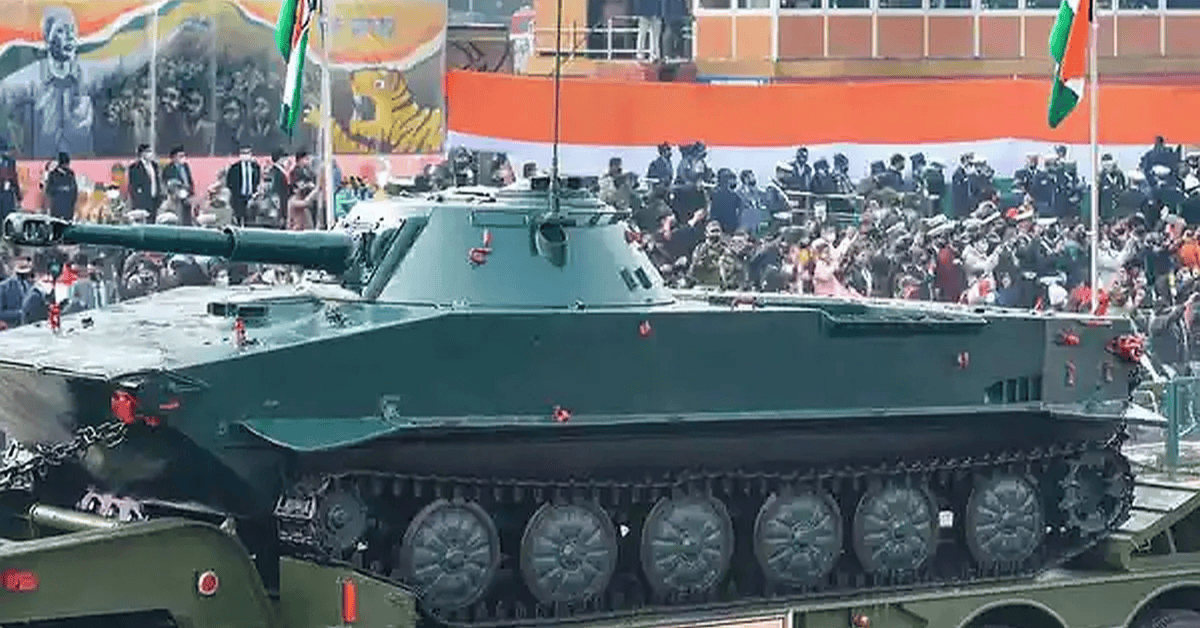What’s Fueling the Surge in Defense Stocks?
Defense stocks are on fire in 2025. From Mumbai to Munich, investors are piling into companies that make missiles, fighter jets, and submarines. The reasons? A potent mix of rising geopolitical tensions, massive government spending, and a global push for military modernization.
Let’s break down what’s happening—and why it matters for your portfolio.
Defense Stocks: Geopolitical Tensions Are Driving Demand
In early 2025, military conflicts between India and Pakistan intensified. India’s swift counter-terror operations have not only bolstered national security but also investor confidence in defense-related industries. On Friday, defense sector stocks in India experienced a notable surge, continuing their recent upward momentum. This boost was prominently observed across companies involved in aerospace, missile, and drone manufacturing.
The rally was driven by heightened investor interest following India’s recent counter-terror operations, which have likely reinforced confidence in defense-related industries.
Among the stocks, Paras Defence stood out with an impressive jump of nearly 19%, highlighting the strong market response to the evolving geopolitical context and the perceived strategic importance of domestic defense capabilities.
India’s Push for Self-Reliance in Defense
India is aggressively pursuing an import substitution strategy to reduce dependency on foreign defense equipment. This initiative is already driving defense stocks higher. The push for self-reliance is acting as a massive tailwind. Things can play out pretty well for defense companies, for both public as well as private sector players, as India moves towards reducing imports and become a big exporter.
FYI, we are already exporting missiles to the Philippines. Defense exports have grown by 334% in the last five years. India exports to more than 75 countries. By 2025, defense exports are expected to grow almost 5 times.

Massive Government Spending Boosts the Sector
The Indian government is likely to spend a massive US$130 billion over the next 7-8 years on the modernization of the armed forces. This will give a big boost to the indigenization of defense procurement.
In this year’s budget, India announced around US$70.2 billion to the defense sector, an increase of 10% from the past year. The budget also saw 68% of the capital procurement for the domestic industry.
European Rearmament: A New Frontier
Europe is undergoing a significant strategic realignment in defense policy, particularly accelerating in 2022 and 2025 due to the ongoing war in Ukraine and geopolitical policy shifts during the second presidency of United States President Donald Trump.
This transformation is characterized by increased localization of defense manufacturing, investment in research and development, and initiatives for greater military integration among European Union member states, with the intent to rehabilitate autonomous European defense capabilities independent of NATO or the United States.
U.S. Defense Reforms Under Trump
The S&P 500 defense sector has entered a new phase of optimism following President Donald Trump’s sweeping April 2025 Executive Orders aimed at overhauling U.S. defense procurement. These reforms, targeting speed, innovation, and cost efficiency, have sparked analyst upgrades and investor confidence, with the sector now viewed as a strategic growth area amid escalating geopolitical tensions. The cornerstone of Trump’s strategy is EO 142xx, which mandates a complete overhaul of the Department of Defense acquisition system.
Key provisions include prioritizing off-the-shelf commercial products and Other Transaction Authority agreements to bypass bureaucratic delays, a 90-day review of Major Defense Acquisition Programs to cancel those exceeding 15% cost overruns, delays, or performance failures, and redesigning metrics to reward innovation and risk-taking among DoD personnel.
Top Indian Defense Stocks to Watch
India’s defense sector is witnessing significant growth, with several companies standing out:
Hindustan Aeronautics Ltd (HAL): India’s leading aerospace and defense manufacturer, specializing in the production, repair, and maintenance of aircraft, helicopters, and engines. In FY24, HAL reported revenues of ₹30,380 crore, reflecting 13% YoY growth, with an order book valued at ₹94,000 crore. Looking ahead, HAL expects orders worth ₹1.6-1.7 trillion over the next three years.
Bharat Electronics (BEL): A premier public sector enterprise specializing in advanced electronic equipment for the defense and aerospace sectors. In FY24, BEL achieved revenues of ₹11,930 crore, supported by a strong order book of ₹76,710 crore. Looking ahead, BEL aims to diversify its portfolio, increasing non-defense revenue to 30% by FY30 while targeting annual growth of 15%-17%.
Bharat Dynamics Ltd (BDL): Focused on manufacturing guided missiles and defense equipment for the Indian Armed Forces. Bharat Dynamics recorded an order book of ₹19,400 crore as of FY24, compared to ₹10,170 crore in FY22, reflecting robust demand. The company has an order pipeline of ₹20,000 crore for the next two-three years.
Mazagon Dock Shipbuilders (MDL): Known for constructing warships, submarines, and offshore platforms. In FY24, MDL’s defense-related projects contributed 98% to its revenue, driven by key undertakings like the Project 17A frigates, Kalvari-class submarines, and Project-15 Bravo destroyers. The company’s current order book stands strong at ₹38,390 crore.

Global Defense Stocks: Opportunities Beyond Borders
Investors are also eyeing defense stocks beyond traditional giants:
Lockheed Martin: Despite a 15% decline from its October 2024 highs, Lockheed Martin remains a significant player, focusing on AI, space defense, and cybersecurity.
Northrop Grumman: With a record backlog exceeding $94 billion, Northrop Grumman offers long-term stability.
BAE Systems: UK-based BAE Systems is highlighted as a strong value pick with expected 10% annual earnings growth and an 8% upside to its target price.
Economic Impact: Why Gold Prices Surge & What It Means for You
Every year, Akshaya Tritiya sends gold prices into overdrive – and 2025 is no exception. But why does this happen?
It’s not just tradition that drives the frenzy — it’s economics. As demand for gold skyrockets on this auspicious day, especially in India, jewelers prepare months in advance with special collections, flash discounts, and even 0% making charges (read the fine print though, always). This surge not only affects domestic markets but also ripples through global bullion exchanges.
Pro tip: Buying gold on Akshaya Tritiya isn’t just spiritual; it’s also viewed as a smart investment. In fact, financial advisors often see a jump in clients asking about Sovereign Gold Bonds (SGBs), Gold ETFs, and digital gold leading up to the festival.
If you’re looking to buy gold — consider setting a budget beforehand and explore non-physical forms if storage and purity are a concern.
Mythological Origins Beyond the Mainstream: From Veda Vyasa to Draupadi’s Akshaya Patra
While most people associate Akshaya Tritiya with Lord Vishnu and the birth of the Treta Yuga, there are lesser-known yet fascinating legends that deepen its spiritual meaning.
For example:
Veda Vyasa began composing the epic Mahabharata with Lord Ganesha as his scribe on this very day. That’s right — one of the longest epics in the world started on Akshaya Tritiya, making it a day symbolizing the unstoppable flow of wisdom and narrative power.
Another tale from the Mahabharata tells us about Draupadi receiving the Akshaya Patra (the inexhaustible vessel) from Lord Krishna. This magical utensil ensured the Pandavas never ran out of food during their exile — a symbol of never-ending abundance.
These stories aren’t just bedtime tales — they’re symbolic representations of the day’s core value: Akshaya, meaning “that which never diminishes.”

FAQs: What People Are Asking About Defense Stocks
Q1: Why are defense stocks booming in 2025?
A combination of geopolitical tensions, increased government spending, and a push for self-reliance in defense manufacturing is driving the surge.
Q2: Is it a good time to invest in defense stocks?
Given the current trends and government initiatives, many analysts believe it’s a favorable time, but investors should conduct their own research.
Q3: Which Indian defense stocks are performing well?
Companies like HAL, BEL, BDL, and MDL have shown strong performance due to robust order books and government contracts.
Q4: How is the global defense market impacting Indian stocks?
Global demand for defense equipment and India’s push for exports are positively influencing Indian defense stocks. mint
Q5: What are the risks associated with investing in defense stocks?
Potential risks include changes in government policies, geopolitical shifts, and budget reallocations.
Q6: How does government spending affect defense stocks?
Increased government spending typically leads to more contracts for defense companies, boosting their revenues and stock performance.
Q7: Are defense stocks suitable for long-term investment?
Many defense companies have long-term contracts and stable revenues, making them attractive for long-term investors.
Q8: How do global conflicts influence defense stocks?
Global conflicts often lead to increased defense spending, which can positively impact defense stocks.
Q9: What role does technology play in defense stocks?
Advancements in technology, such as AI and cybersecurity, are becoming integral to defense strategies, benefiting tech-savvy defense companies.
Q10: How can I start investing in defense stocks?
Investors can start by researching defense companies, understanding their financials, and considering mutual funds or ETFs focused on the defense sector.
Ready to Explore More?
Discover in-depth analyses and insights on defense stocks at Gemscor.
*Note: This article is for informational purposes only and does not constitute investment advice. Always consult with a financial advisor before making investment














